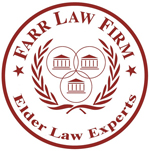 Technology adoption among seniors is growing, and there are no signs of it slowing down. Older adults are using smartphones, wearables, voice-powered home assistants, and other smart home technologies with almost the same vigor as younger people, according to an AARP survey.
Technology adoption among seniors is growing, and there are no signs of it slowing down. Older adults are using smartphones, wearables, voice-powered home assistants, and other smart home technologies with almost the same vigor as younger people, according to an AARP survey.
Tools that once may have seemed futuristic or out of reach are increasingly becoming a way of life. The main reason for adopting new technology, according to three-quarters of those surveyed, is a desire to age in place for as long as possible. Helping seniors to do so is a host of services and devices designed to support a healthier, safer, and more independent lifestyle.
According to the survey referenced above and other research, below are some of the popular emerging senior technologies for 2021 (there are lots!). In part one of this article, we will discuss smart technology for freedom and flexibility in the home, home security technology, and smart contact sensors. Next week, we will focus on health and medical technology, wearables, and tech to build social connections.
Smart Technology for Flexibility and Freedom in the Home
From keeping your home illuminated to avoiding falls to automatically shutting off a stove or detecting a water leak, smart home devices offer flexibility and freedom to older adults who are aging-in-place. Here are some examples (please note that the example products that we list are typically one of many similar products; we are not endorsing any particular product or manufacturer, nor do we ever make any money if you follow a link to purchase any particular product; as always, our articles are purely educational):
• Smart smoke detectors: Everyone should have working smoke detectors throughout the house, but there are concerns about how easily an older person who may have hearing loss can hear an alarm, how quickly they might react to it, and whether somebody with cognitive impairment would react properly to an alarm. Smart smoke detectors not only deliver an audible siren inside the house but can also alert friends, neighbors, and caregivers via smartphone alerts. The Google Nest Protect is a smoke and carbon monoxide alarm that warns of danger by voice and siren, and sends smartphone alerts to as many as six contacts. It also has a self-check feature and built-in night-light. If you’re not ready to replace (and trash) existing smoke detectors, the Roost Smart Battery can smarten up almost any smoke detector already running in a home (so long as it uses replaceable 9-volt batteries).
Seniors are particularly interested in using smart home and security tech to see who is at the front door, to automatically shut off appliances, to control a thermostat, to detect a fall or get emergency help, and to monitor doors and windows. Yet older Americans also see a downside: only about 1 in 10 are confident that their interactions with any smart home technology will be kept private. Here are some examples of highly rated home security systems/smart locks:
• Everyone forgets to lock the door now and then. Smart locks make it easy to check the status of doors and can lock or unlock them remotely if need be. The Wyze Lock is designed to work with an existing deadbolt, and it allows you to lock and unlock the door remotely and to auto-lock the door after it’s closed. The Wyze Lock also sends notifications when the door has been left open.
Smart Contact Sensors
According to the World Health Organization, the National Institute on Aging, and the Alzheimer’s Association, people with dementia often wander away from home. Contact sensors, including small devices that you can attach to any door, can alert you when doors (or windows) have been opened, are safely shut, or have been left open for too long.
Many smart contact sensors are tied into security systems or specific platforms (such as Alexa, HomeKit, and SmartThings). All of them can integrate with other smart devices so that opening a door can trigger a light, a voice announcement, or even a call to the police.
The Monoprice Stitch Wireless Smart Door/Window Sensor is a standalone sensor that is easy to install and doesn’t require a full security system or a smart-home hub. In addition to sending open and close alerts, it can alert you to device tampering or when the battery runs low.
Discussing Smart Technology with Loved Ones
Smart-home devices—including small sensors, discreet cameras, smoke alarms, and voice-activated speakers—can make everyday life more convenient, safer, and more social. Technology can help people live independently while giving caregivers peace of mind in knowing that all is well.
The decision to use smart technology can be a weighty issue, however, due to security and privacy concerns. This is why the decision to install any devices should of course be made with the consultation and blessing of the senior loved one in question.
When you’re discussing technology as a family, the focus shouldn’t be on why it’s good for the caregiver but rather on how it helps the person living with it, making them safer, more comfortable, and more independent. The persons living with smart-home devices should be fully informed that the devices are there, what they do, and how they work.
If the senior is mentally incapacitated or has trouble making sound decisions, be sure to talk to a medical provider and/or the individual’s agent under his or her medical power of attorney. Include the impaired person in the discussions, even if they may not be able to remember it later. A note from the doctor that says that he or she is recommending this can be shown to the person later, if it helps build trust and peace of mind.
When Technology is Not Enough to Make Aging-in-Place the Best Option
Most people want to stay in their home for as long as possible, and the technology described above will certainly prove helpful. However, if despite the technology that is available, you or a loved one cannot live independently and are showing signs that living alone is a strain, it may be time to consider other alternatives.
Whether the outcome is in-home assisted living, a move to an assisted living facility, or a move to a nursing home in the future, it is always wise to plan ahead. Medicaid Asset Protection is the process of protecting assets from the catastrophic costs of nursing home care. Please contact us whenever you’re ready to make an appointment for an initial consultation:
Elder Care Attorney Fairfax: 703-691-1888
Elder Care Attorney Fredericksburg: 540-479-1435
Elder Care Attorney Rockville: 301-519-8041
Elder Care Attorney DC: 202-587-2797














Leave a comment
You must be logged in to post a comment.